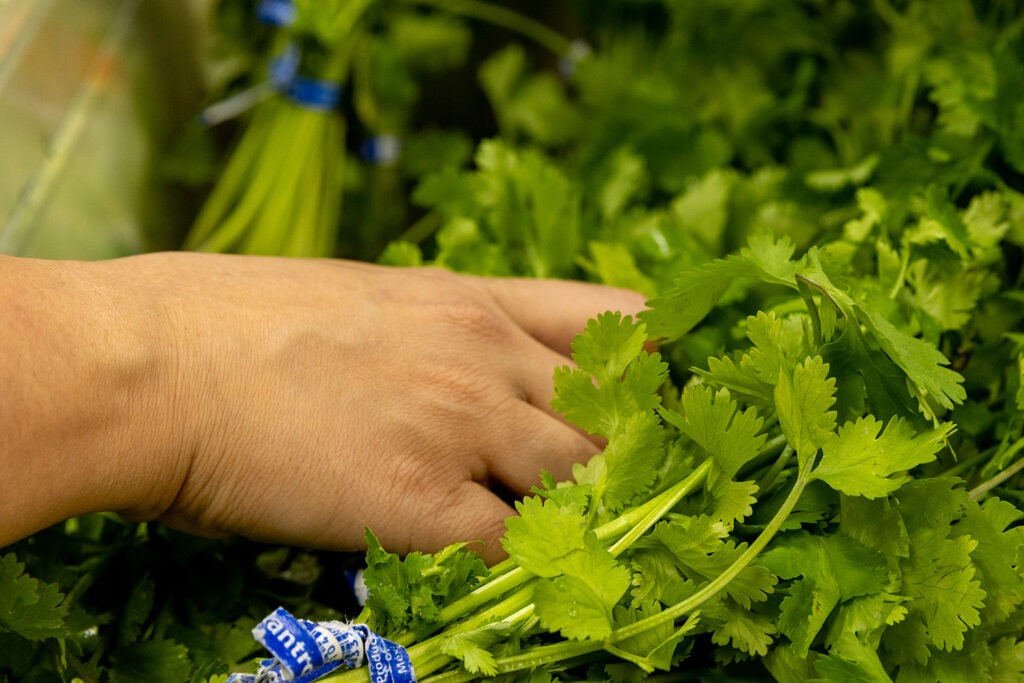Access to healthy, affordable food is essential for every family and child’s wellbeing — yet in many communities, efforts to address food insecurity remain fragmented. Organizations and advocates work hard, but often alone, each tackling just one piece of a much larger system.
This is where a food policy council comes in. Rather than having separate advocates and organizations working in isolation to address food insecurity, a food policy council creates a platform for organized and unified action.
For the Kent County Food Policy Council, collaboration has resulted in the creation of a food system plan to ensure access to healthy food for all residents in this Michigan county, which includes the city of Grand Rapids.
“There’s objectives around building and designing our community to ensure access to healthy food, investing in programs that address the affordability of healthy food, and promoting opportunities for people to grow, prepare and share their own food,” explained Janelle Vandergrift, who has been working with partners since 2018 to form the council.

Food insecurity reflects deeper inequities
These early efforts are beginning to make a difference, but they also reveal the deeper challenges that fuel food insecurity — issues rooted in long-standing social and economic inequities. Food insecurity is intertwined with other established social determinants of health like poverty, unemployment, immigration status, incarceration and disability.
According to the World Health Organization, food insecurity exists when people lack reliable access to enough affordable and nutritious food. This can look like limited or unstable availability of safe and adequate food or an inability to get food from a grocery store or food pantry.
In Kent County, food advocates are seeing this play out in real time.
“We know that 12% of the population in Kent County experiences food insecurity, and that can really vary by census tract,” Vandergrift said. “For example, for Black residents in Kent County, 31% experience food insecurity and 19% of the Latino community experiences food insecurity.”
The concentration of social and economic disadvantages experienced by people of color drive higher rates of food insecurity.

According to data from Kent County, Black non-Hispanic households are nearly two times more likely to be food insecure than the national average and they are also 45% more likely to have low access to healthy food than other groups.
In Kent County alone, there are more than 200 sites where people experiencing food insecurity can access food. These include food pantries, food kitchens and low or no-cost specialized grocery stores. But oftentimes, Vandergrift says, these groups have a limited capacity to collaborate with one another, meaning that much of the time they can’t focus on long-term or systemic solutions.
“There’s so many wonderful programs in Kent County that are addressing food, but often the food work can be very siloed, and people are not connecting and working together on some of the structural policy issues,” she said.

Creating a cohesive system through collaboration
One example of how the Kent County Food Policy Council is making a difference is a partnership between one of West Michigan’s largest health care providers and an online marketplace app that connects food purchasers with local producers to source food and supplies from farmers in the region. Another example is regional collaboration among diverse partners to find food that would otherwise be thrown away and get it to emergency food sites.
These changes, Vandergrift says, wouldn’t have been possible without the relationships fostered with each member of the council. These members don’t just represent individuals working at nonprofit organizations, or those advocating for better policies around food access, but also include individuals who have experienced food insecurity themselves.

This, Vandergrift adds, expands the council’s ability to make better informed decisions.
“It’s because we are doing our best to actually include and value the experiences of people in Kent County who have struggled to get their basic nutritional needs,” she said.
When the council first formed in 2021, the 18-member group worked to develop a food system assessment for Kent County to get a deeper look into how, why and where those experiencing food insecurity are meeting their needs. That assessment was completed in 2023, and in the following year the council released the Kent County Food System Plan.
“It was the culmination of two years’ worth of intentional engagement across our county,” explained Eleanor Moreno, strategy manager at the Kent County Food Policy Council. “We went all the way north, all the way south, all the way east and west across the county to talk to people about food in whatever ways brings them joy or pain.”
Centering community voices in access and policy reform
The Kent County Food System Plan prioritizes five main goals: fostering communities where everyone has access to healthy foods, investing in making food more affordable, creating programs for people to grow and make their own food, preventing excess food waste and supporting an equitable charitable food system.
Moreno facilitates the strategy and partnerships that support food access advocates in understanding and meeting these goals.
“Our role is to inform our partners, advocate for policy changes and activate our network to do advocacy work so then our community members or neighbors are informed about what some of those changes are,” Moreno said. “This can look like supporting nonprofit partners to be more informed on the food access landscape so that they, in turn, can better inform community members. But talking about policies and change isn’t always easy.
“Building relationships with people who don’t understand policy language is hard, and so we have to ensure that we are informing people in a way that feels accessible while also building long-term relationships with folks. We want people to be engaged for the long run and doing that with a lot of intention takes a long time.”

Since 2021, W.K. Kellogg Foundation Senior Program Officer Marijata Daniel-Echols has been witnessing that engagement play out. At the beginning, the goal was to create a food policy council, but the group has grown to represent a variety of voices and people.
“Success is bringing everybody in, community-identified issues, community-identified solutions and resource acquisition to move towards those solutions,” she said.
Looking ahead, the Kent County Food Policy Council plans to continue fostering relationships to expand food access in the county while fostering collaboration, understanding and awareness within the community.

Kent Food Policy Council steps up amid SNAP pause
October 2025
During the federal SNAP funding pause, the Kent Food Policy Council is mobilizing community partners to keep food on families’ tables. Led by strategy manager Eleanor Moreno, the council is coordinating local food pantries, schools and nonprofits to help children and parents access nutritious meals. The group is working to expand awareness of emergency food resources, advocate for stronger local nutrition policies and explore ways to redirect surplus food from grocery stores and farms to those in need. “This is survival mode for many families,” Moreno said. “We’re focused on collaboration, not competition, to make sure no child goes hungry.”







Comments